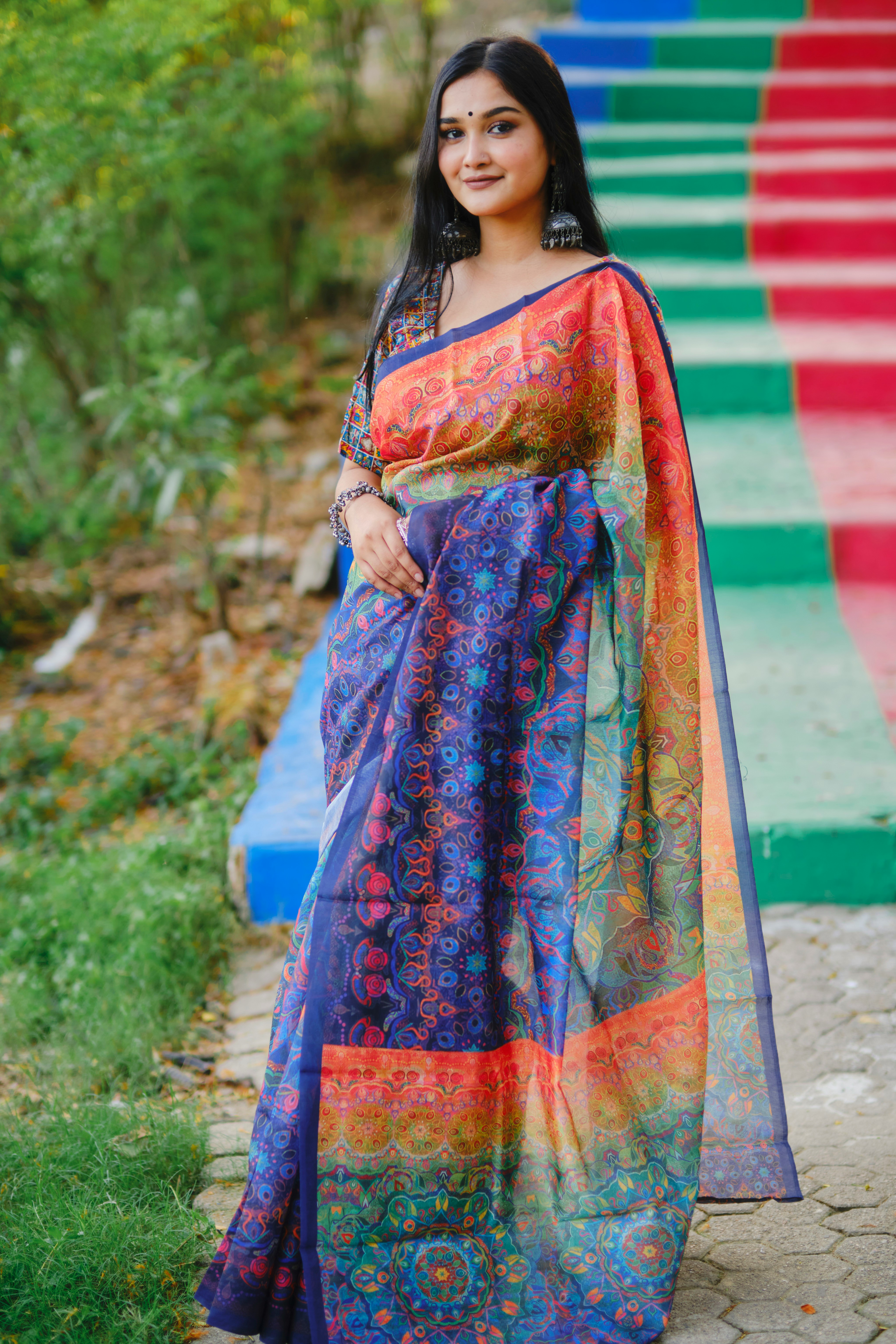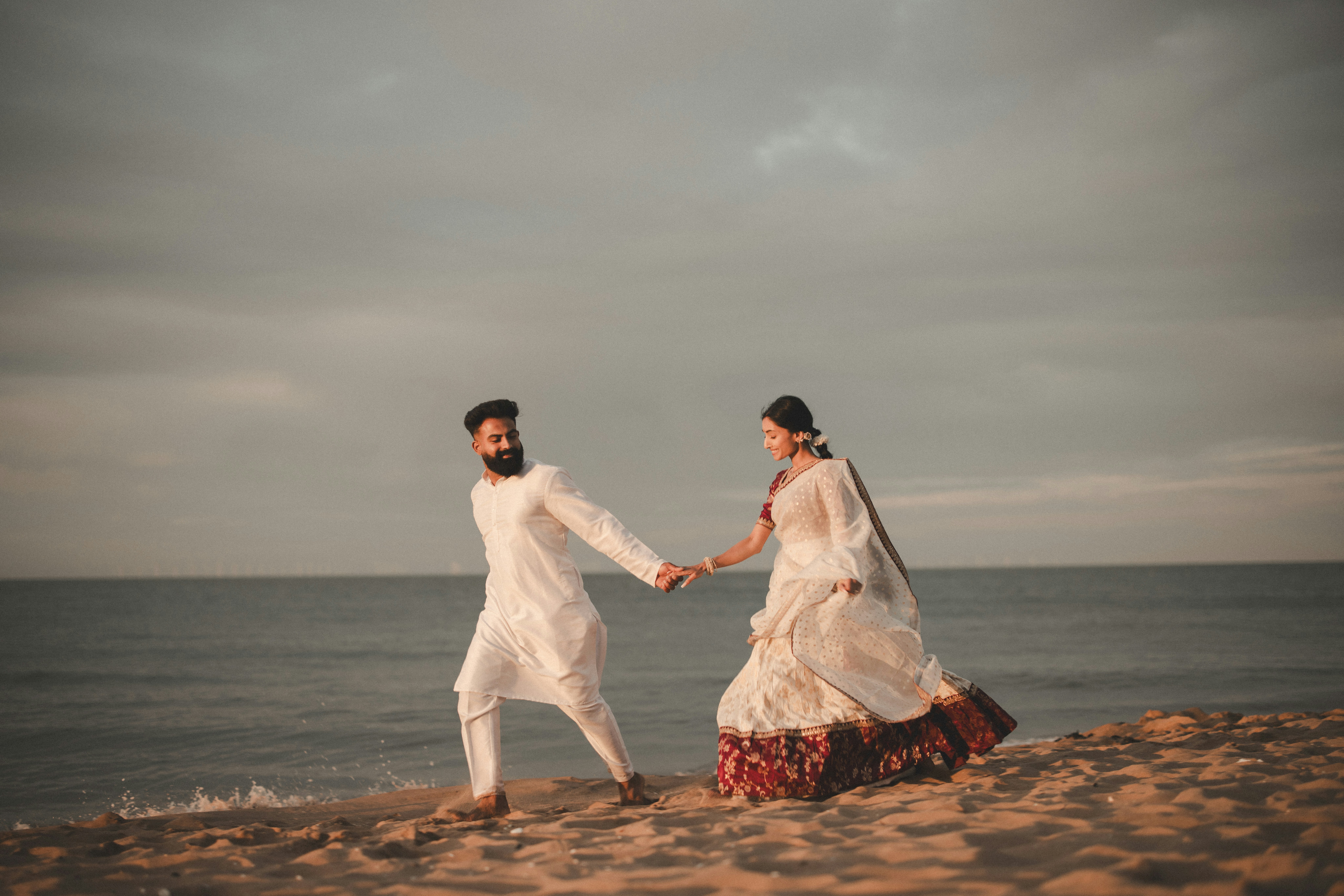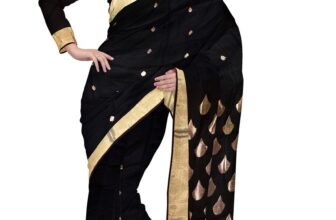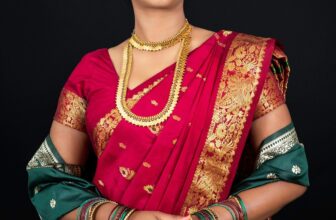
India’s sartorial story is as vibrant and diverse as its culture. With centuries of tradition woven into its threads, Indian attire has gracefully evolved from classic silhouettes like the saree and salwar kameez to contemporary fusion wear that resonates with the global fashion scene. This evolution reflects not just changing fashion tastes but also the broader transformations in society, identity, and cultural expression.
The Classic Roots: Traditional Indian Attire
The cornerstone of Indian traditional wear has always been its deep connection to culture, region, and identity. The saree, for instance, is more than just a garment — it is a symbol of elegance, grace, and heritage.
Saree: A Timeless Drape
The saree, an unstitched piece of cloth varying between 5 to 9 yards, has been worn by Indian women for thousands of years. Ancient sculptures and texts dating back to the Indus Valley Civilization depict women in draped garments that resemble the saree. Over time, regional styles emerged — from the Banarasi silk sarees of Uttar Pradesh to the Kanjeevaram sarees of Tamil Nadu and the Bandhani sarees of Gujarat.
The saree was not just a fashion choice but also a symbol of status, tradition, and artistry. Intricate embroidery, handloom weaving, and natural dyes were often used to create masterpieces passed down through generations.
Salwar Kameez and Lehenga Choli
The salwar kameez, popular in North India, became a staple during the Mughal era. Comfortable yet elegant, it combined functionality with femininity. Similarly, the lehenga choli was embraced during royal festivities and weddings. These garments celebrated rich embroidery, mirror work, and luxurious fabrics.
Colonial Influence and the Birth of Indo-Western Fashion
The British colonial period marked a turning point in Indian fashion. Western clothing styles like blouses, petticoats, and tailored coats slowly integrated into Indian wardrobes. Indian elite women began wearing sarees with Victorian blouses, giving rise to a hybrid fashion that respected tradition while embracing new influences.
During the freedom struggle, Mahatma Gandhi promoted the use of Khadi — handspun, handwoven fabric — as a symbol of self-reliance and resistance against British goods. This sparked a revival of indigenous textiles and craftsmanship, planting seeds for future fashion revolutions.
Post-Independence Era: The Golden Age of Cinema and Fashion
Post-1947, Indian fashion saw a renaissance. The film industry played a pivotal role in popularizing styles. Actresses like Madhubala and Nargis showcased elegant sarees and salwar suits with intricate detailing, while the 1970s saw the rise of bell-bottoms and chiffon sarees inspired by Bollywood divas like Zeenat Aman and Hema Malini.
Designers began experimenting with cuts, colors, and silhouettes. Fashion became a medium of self-expression, merging Indian sensibilities with global trends. This was the era where the concept of “Indo-Western” clothing began to take shape.
The 1990s and 2000s: Globalization and Fashion Liberalization
The liberalization of India’s economy in the 1990s had a ripple effect on fashion. Exposure to international brands and media introduced Indians to global trends. This decade saw a bold shift toward westernized attire, especially among urban youth.
Denim, skirts, crop tops, and trousers became increasingly popular. However, traditional wear did not disappear. Instead, it began evolving. Kurti with jeans, Indo-Western gowns, and fusion lehengas became fashionable choices for the modern Indian woman who wanted both comfort and cultural connection.
Designers like Ritu Kumar, Manish Malhotra, Sabyasachi Mukherjee, and Tarun Tahiliani began redefining Indian fashion. They infused traditional craftsmanship with modern aesthetics, catering to both domestic and international audiences.
The Rise of Fusion Wear: A Perfect Blend of Heritage and Modernity
Today, fusion wear dominates Indian fashion. It is not uncommon to see a woman pair a traditional Banarasi dupatta with a sleek jumpsuit or wear an embroidered jacket over a western dress. Fusion wear isn’t about replacing tradition — it’s about reinventing it.
This genre allows the wearer to express individual style while honoring their roots. Whether it’s a saree worn with a crop top, dhoti pants paired with a tank top, or palazzos teamed with a kurti, fusion wear breaks rigid fashion rules and fosters creativity.
The Influence of Social Media and Fashion Influencers
Social media platforms like Instagram and Pinterest have democratized fashion. Fashion bloggers and influencers showcase how traditional and modern pieces can be mixed to create unique, trendy looks. Bridal fashion, in particular, has embraced fusion — brides now opt for Indo-Western gowns, cape lehengas, or sarees with contemporary draping techniques.
This digital age has also empowered artisans and small businesses. Many designers now focus on sustainable fashion, reviving dying crafts like block printing, kalamkari, and chikankari, and presenting them in modern silhouettes.
Gender Fluidity and Inclusive Fashion
One of the most significant changes in modern Indian attire is the rise of gender-neutral fashion. Designers are challenging norms by creating collections that blur the lines between traditional “male” and “female” clothing. Sarees worn by men, dhotis reimagined for women, and unisex kurtas reflect a progressive shift in how Indian clothing is perceived.
Fashion is no longer confined by gender binaries — it’s a space for expression, identity, and freedom.
Sustainable and Conscious Fashion
As awareness grows about the environmental impact of fast fashion, Indian consumers are returning to their roots — embracing handloom, natural dyes, and slow fashion. Khadi, once a symbol of resistance, is now a trend embraced by eco-conscious millennials. Upcycled sarees, vintage jewelry, and handwoven fabrics are making a comeback in modern wardrobes.
Conclusion: Embracing the Past, Designing the Future
The journey from classic sarees to modern fusion wear is a testimony to India’s ability to honor its heritage while evolving with the times. Indian attire has never been static — it flows like the threads of a well-woven fabric, absorbing stories, histories, and emotions.
Today’s generation wears their culture with pride — whether in the folds of a draped saree or the cut of a contemporary silhouette. As fashion continues to evolve, one thing remains constant: the deep-rooted connection between clothing and identity in the Indian consciousness.






